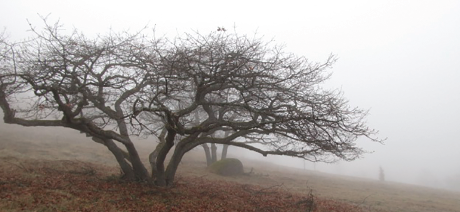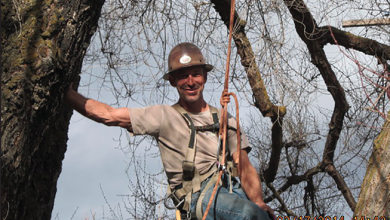Managing a Single Tree Forest…
The title is a little misleading as there really is no such thing as a single tree forest. Trees have, for the most part, evolved amongst their kin. Growth habits, good or bad, depend mostly on what surrounds the tree over time.
A Douglas fir growing up in a forest is a whole different tree compared to a loner all by itself. A common term among foresters and loggers is “Wolf” tree. It can be a bad thing if the tree is brittle or weak-wooded and out grows its natural forest form and becomes leggy or what I like to refer to as “beamy,” with a large empty space around it the tree fills that space, and sometimes, this is its demise.
Remembering that we can easily keep a big tree small, MAKING a big tree small is impossible. Mitigating for such a situation is the most difficult task for an arborist. If the tree is well behaved, meaning it doesn’t show a penchant for puking limbs, hooray for us!
There are fine examples of this throughout town, giant Deodar cedars along the boulevard, for example. Desperate times call for drastic measures when the tree decides it wants to have a tantrum. Removing excess weight while trying to keep the structure in scale while keeping pruning injuries to a minimum takes many years of experience.
It is easy to overdo it, and the best thing about a really fast car is really good brakes!
Sometimes reinforcement along the way may be needed such as a prop or through rodding (bolting), and any pruning to achieve the goal is best spread out over time. If the tree responds to pruning by copious regrowth by sprouting, then the interval of maintenance becomes shorter. When a tree senses open air around it, it wants to occupy that air. Planting trees in a group setting (forest) tends to slow them down and mellow them out. Sudden exposure to elements such as wind and sun, can do a lot of damage if the tree/s are not used to such exposure. This is not to say you shouldn’t plant a single tree, but you will want to choose sturdier specimens when doing so.
You will notice that trees with a high failure rate when alone do quite well in a forest.
Some trees just don’t follow the rules and will fail no matter what action is taken and these are usually when the environment around them has a substantial change. If the single tree is properly maintained by being kept “in scale” it should have a relatively trouble free life.
Besides changing the cultural environment, an arborist can really only remove things from a tree. That aspect is what you pay for when you hire an arborist. If I could wish for one thing as an arborist, it would be to have the ability to ADD branches!
As always, plant high and often…



